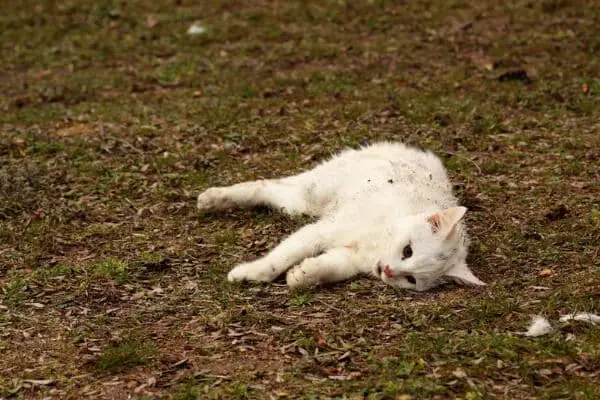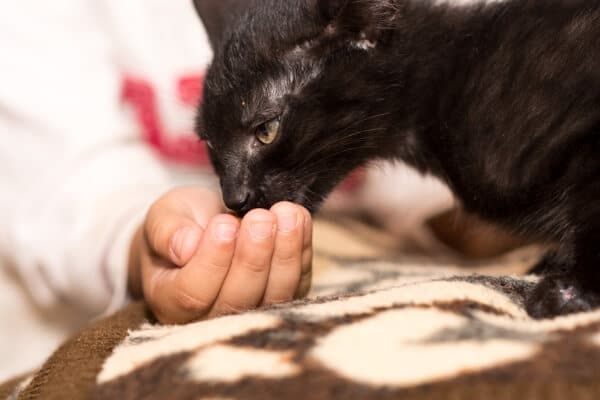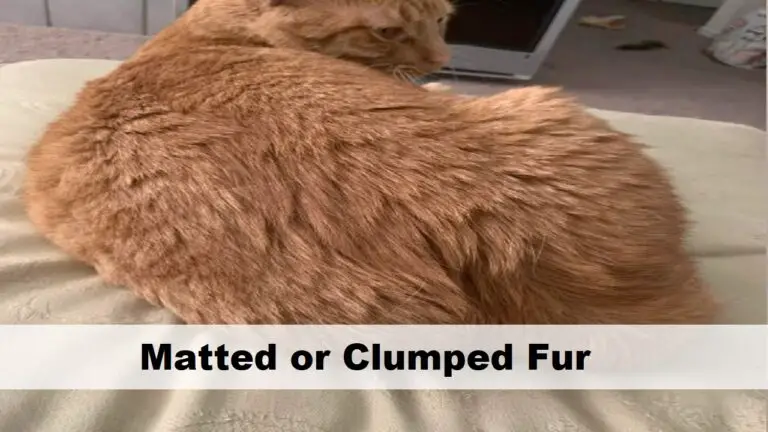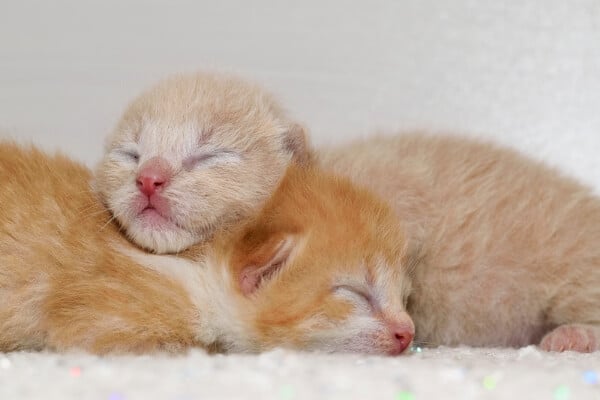How Can You Tell From Rigor Mortis How Long A Cat Has Been Dead?

When our feline companions leave us, they often do so quietly and without warning, leaving us with lingering questions. One of the most crucial – and sometimes perplexing – is identifying when the unfortunate event occurred. Science offers a tool to shed light on this mystery, called: rigor mortis.
Rigor mortis (the stiffening of muscles) sets in a few hours after death and can last anywhere from twelve hours to a few days. However, there’s need to consider various factors that can influence the onset and duration of this process, such as the environment, the size and condition of the cat, and the ambient temperature. If the cat is of average size and found in a room-temperature environment with stiff muscles, it is still in rigor mortis and likely hasn’t been dead for more than a day.
Other factors like body temperature, livor mortis (the pooling of blood in the lower part of the body), and the stage of decomposition need to be considered alongside rigor mortis to determine the time of death more accurately. Warmer environment, for example, can speed up the process, while a colder one can slow it down.
Read Also: My Cat Died In His Sleep. [Why? & Was It Peaceful?]
How Does Rigor Mortis Determine Time Of Death In Cats?
Rigor mortis is a physiological process that can be used to estimate the time of death. This process happens in a relatively predictable timeline, thus providing key time markers.
The process typically begins around 1 to 6 hours after a cat has died, starting in the smaller muscles, such as those in the face, and gradually progressing to the larger body muscles. If a deceased cat’s body is found during this initial phase, it can be inferred that the cat died within the past few hours.
The stiffening peaks at around 12 to 24 hours after death, where the entire body of the cat is rigid. If a deceased cat is found in this state of full-body rigor mortis, it’s likely that it died around half a day to a full day ago.
Around 48 to 72 hours after death, the stiffness begins to recede, starting from the same smaller muscles where it initially set in and moving to the larger muscles. A body that is becoming flaccid again, especially in the smaller muscles, indicates that the cat likely died more than two days ago.
Thus, while it’s a helpful tool, rigor mortis should not be the sole basis for determining time of death and is best used alongside other post-mortem assessments.
Stages Of Rigor Mortis In Cats.
When examining the stages of rigor mortis in cats, it’s essential to understand that rigor mortis itself is not a stage but rather a specific process within the larger timeline of decomposition. Here are the stages of decomposition that a cat’s body goes through after death:
1. Autolysis
After death, the body undergoes autolysis, which involves the breakdown of cells and tissues due to the release of digestive enzymes. This stage begins shortly after death and continues for a few hours. While there may not be noticeable external changes, internal breakdown processes are occurring.
2. Bloat
As autolysis progresses, bacteria within the body multiply and produce gases, leading to bloating. This stage typically occurs within 24 to 48 hours after death. The abdomen swells due to the accumulation of gases, resulting in a distended appearance.
3. Active Decay
This stage is characterized by the rapid breakdown of tissues and the release of foul odors. It typically begins a few days after death. The body undergoes significant decomposition, with fluids leaking and tissues deteriorating. The odor becomes more pronounced, and the body’s appearance is visibly altered.
4. Skeletonization
In the final stage, all soft tissues have decomposed, leaving behind only bones and hair. This process can take weeks to months, depending on environmental conditions and other factors. Eventually, the body becomes a skeletal remains.
Why Does Rigor Mortis Occur In Cats? (The Science Behind Rigor Mortis)
Rigor mortis, or postmortem rigidity, occurs in all animals, including cats, after death. The scientific explanation behind rigor mortis involves complex biochemical processes in muscle tissue.
Muscle movement in a living organism is powered by a molecule called adenosine triphosphate (ATP). ATP binds to a protein called myosin, allowing it to contract the muscle. When the muscle needs to relax, ATP is used to detach the myosin from another protein called actin. This cycle of contraction and relaxation enables all voluntary and involuntary movement.
When an animal dies, its metabolic processes cease, including the production of ATP. However, the body’s cells don’t die immediately and continue to use the available ATP. Once the ATP reserves are depleted, the myosin molecules in the muscle cells remain locked onto actin. This state is what we perceive as rigor mortis, the rigidity of death.
In cats, rigor mortis sets in within a few hours after death, depending on various factors such as the ambient temperature and the cat’s physical condition at the time of death. It begins in the smaller muscles, like those in the face and jaw, before spreading to the larger muscles in the body and limbs.
The cat’s physical condition at death also plays a role to determine when rigor mortis sets. High physical activity pre-death results in quicker ATP consumption and therefore faster rigor mortis onset.
It’s worth noting that rigor mortis is a temporary condition. After a period of 24-48 hours, the muscle cells start to break down due to the action of enzymes and bacteria, a process known as autolysis. This results in the relaxation of the muscles, ending the phase of rigor mortis. Understanding these processes can provide valuable information in forensic studies and veterinary pathology, helping to establish the time of death or understand the circumstances surrounding it.
Rigor Mortis Set In Time And How Long It Lasts In Cats
When a feline passes away, it usually takes about 1 to 6 hours for rigor mortis to set in and lasts for about 36 hours. This timing can depend on various factors such as the ambient temperature, the cat’s body weight, physical condition, and the cause of death.
The process starts at the smaller, more delicate muscles such as those in the face and jaw, then gradually spreads to the larger muscles in the limbs and torso. A cat’s body will reach full rigor mortis usually between 6 to 12 hours after death in ideal environmental conditions. For a cat, this stage sticks around for roughly 18 to 36 hours. Cold can make it last longer, just like how a cold day can make your joints feel stiffer.
After about a day and a half to a day and three-quarters, the cat’s body starts to loosen up again. This is just the body’s way of continuing the natural process that happens after death. By around the 48 to 72-hour mark, the body will slowly return to a state of laxity. Also, the body will have completed autolysis and is often bloated, essentially marking the beginning of active decay or decomposition.
It is important to note that the timing of these processes is not strictly fixed and can vary from one individual to another. Additionally, if you come across a deceased pet or stray animal, it is recommended to contact local animal control or a veterinarian for appropriate handling and disposal.
How Long Does A Cat Stay Warm After Death?
The body temperature of a deceased cat begins to drop immediately after death. Under typical room conditions, the cat’s body, originally at around 101.5°F (38.6°C), cools to match the room temperature.
This process usually takes approximately 40 minutes to one hour although multiple factors, such as the size of the cat, its fur length, and the room’s temperature, can influence this timeline. It’s important to understand that this cooling process, termed algor mortis, varies with each individual case, and these figures are average estimations.
How Do You Know When A Cat Is Completely Dead?
Determining whether a feline or any other pet has passed away is often a challenging and emotional task. It is important to remember that it should be done by a professional, such as a veterinarian, who has been trained to diagnose and handle such situations. However, if you suspect your pet may have passed, here are some signs to look out for:
1. Absence of Vital Signs: This includes the absence of a heartbeat and breathing. You may check for these signs by placing your ear next to the cat’s chest. A cat’s heartbeat is typically fast and quiet, so it might be difficult for an untrained person to detect. Likewise, cats have rapid, shallow breathing. If you don’t detect either of these, it’s an indication that the cat may no longer be alive.
2. Unresponsive to Touch or Noise: When a cat is alive, it usually responds to touch or noises. If the cat doesn’t move or react to loud sounds especially a call for food, it could be an indicator of death.
3. Lack of Blink Reflex: Try gently touching or blowing on the cat’s eye. If the cat doesn’t blink, it could mean the cat is no longer alive. This should be done very carefully and respectfully.
4. Body Temperature Drop: After death, a cat’s body temperature will start to drop and will feel cold to the touch. Normally, the body temperature of a cat is higher than that of humans, ranging from 100.5 to 102.5 degrees Fahrenheit.
5. Fixed, Dilated Pupils: Upon death, a cat’s eyes will be open and the pupils will be dilated. Also, the eyes will not respond to the changes in light. This should give you an indication that the cat is no longer alive.
6. Rigor Mortis: The stiffening of the body after death, known as rigor mortis, usually sets in within 3-4 hours after death. However, it can be affected by environmental conditions and might not be the most accurate indicator of death.
7. Lividity or Livor Mortis: This is the pooling of blood in the lower parts of the body due to gravity. It causes a purplish-red discoloration at the lowest points and can start to appear from 30 minutes to 2 hours after death, becoming fully apparent within 6-12 hours.
8. Signs of Decomposition: Decomposition can start soon after death and is usually accompanied by a strong, unpleasant smell. There can also be visible changes in the body’s color and bloating due to gas accumulation.
Did My Cat Die Peacefully?
Cats, like other animals, are skilled at hiding discomfort. However, there are some signs that can indicate a peaceful passing. If your cat passed away during sleep or seemed relaxed, it might have been a peaceful death. Lack of evident struggle or distress—such as lack of agitated movement, no signs of physical trauma, and a serene facial expression—can also indicate this. It’s important to remember that cats can experience a state called ‘purring sleep’ at the end of their lives, which can be calm and peaceful. However, each cat’s experience is unique and it’s impossible to be certain. If your cat passed away suddenly or in your absence, a vet might provide insights based on post-mortem signs. Regardless, it’s essential to focus on the love and care you provided during their life.
How Long Does It Take For A Dead Cat To Start Emitting Odor
When a cat passes away, the process of decomposition begins immediately. The time it takes for a dead cat to start emitting an odor can vary based on several factors, including environmental conditions and the stage of decomposition. Typically, within a few hours to a day after death, a dead cat may start to release a faint odor, especially if it is kept in a warm and humid environment.
As the decomposition progresses, bacteria and enzymes break down the organic matter, leading to the release of various gases such as sulfur compounds, ammonia, and putrescine. These gases are responsible for the distinctive, unpleasant odor associated with decaying animal tissue.
Factors such as temperature, humidity, and access to air can influence the speed of decomposition and the intensity of the odor. In warmer conditions, the process accelerates, and the odor may become noticeable within a shorter period. Conversely, in colder environments, decomposition slows down, and the odor may take longer to develop.
It’s important to handle deceased animals respectfully and properly dispose of them to prevent the spread of diseases and minimize any potential discomfort caused by the odor.
Final Thoughts: How Can You Tell From Rigor Mortis How Long A Cat Has Been Dead?
Rigor mortis provides important clues, but determining the precise time of a cat’s death can be a complex puzzle. It typically begins a few hours after death, peaks around 12 to 24 hours, and gradually fades over the next one to three days. Also, individual factors like temperature, size, and physical activity can influence this timeline.
However, understand that the estimation of a cat’s time of death requires a comprehensive and multidimensional approach. Rigor mortis is just one piece of the puzzle, and a combination of indicators, along with the expertise of forensic investigators, is necessary for a more reliable determination of when the cat passed away.
Read related posts about





